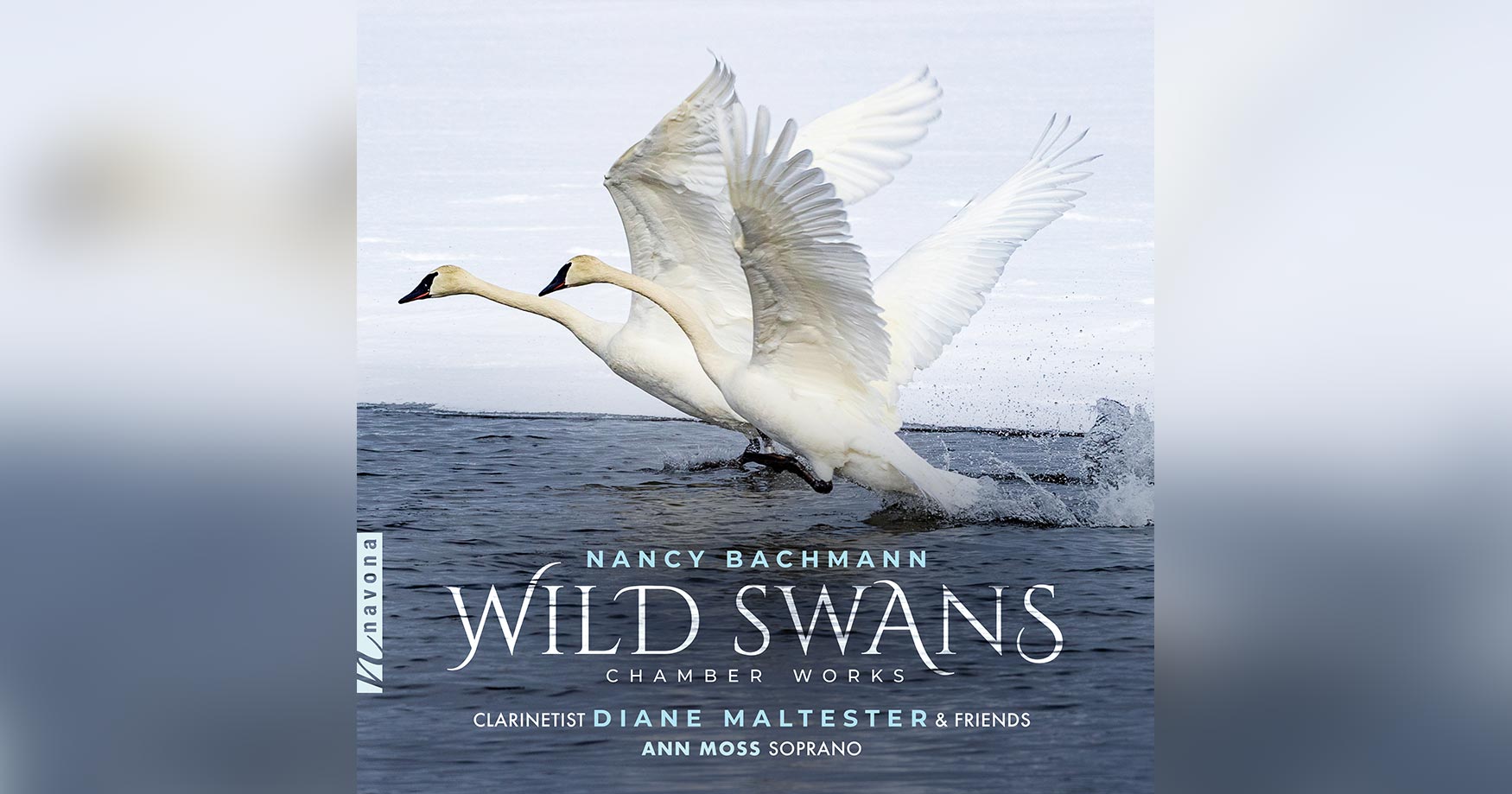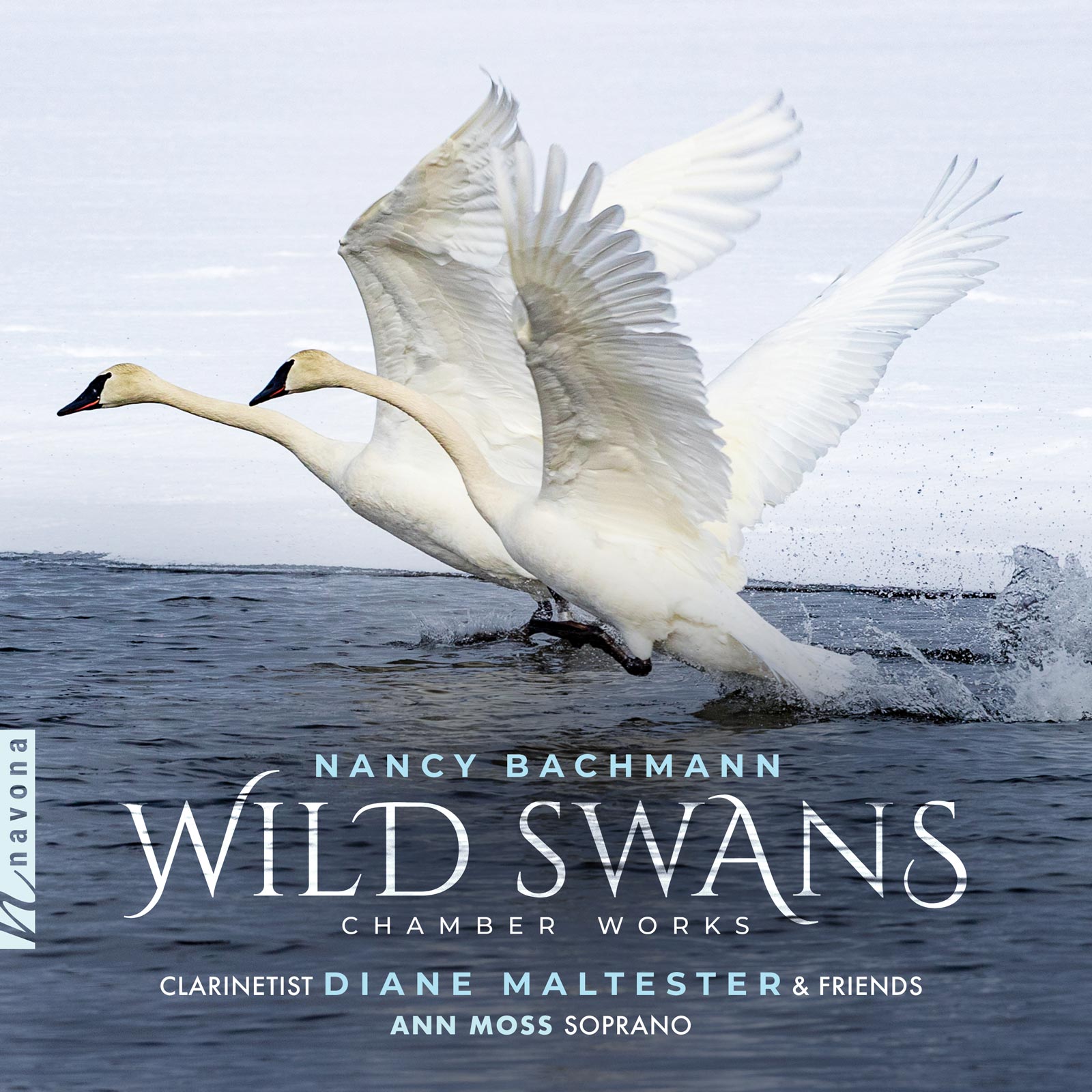
As one explores the transcendent compositions on WILD SWANS, composer Nancy Bachmann’s (NB) brilliance and versatility shine through on every track, illuminated by the extraordinary artistry of clarinetist Diane Maltester (DM) and all her collaborators. A mesmerizing musical journey that transports listeners to beautiful and exotic destinations.
Today, Nancy and Diane are our featured artists in “The Inside Story,” a blog series exploring the inner workings and personalities of our composers and performers. Read on for a look at Nancy’s intentions with WILD SWANS and an inspiring message from Diane to anyone looking to pursue a life in music…
What have been your biggest inspirations on your musical journey?
NB: My inspiration often comes from the natural environment; the great outdoors. I live in the San Francisco Bay Delta Area, near to the Sacramento River, in the gentle hills at the foot of Mount Diablo. I’m 40 minutes away from the Redwoods and 50 minutes from the Pacific shore. When my husband and I go camping I often get ideas for lyrics and music. It was the actual Equinox one year in the Redwoods that inspired lyrics for the song “Autumn Equinox” (California Romances on WILD SWANS for soprano, clarinet, and piano) …“There’s an ache in the air of September that longs for the winter’s rest”…..the remainder of the poem came to me on that long hike through the foggy woods. After that it seemed inevitable that the other two songs of the California Romances should celebrate the Pacific ocean and Springtime when the hills are covered with lupin and golden California poppies.
If you weren’t a musician, what would you be doing?
NB: Well, I am interested in a lot of things but particularly science: physics, astronomy and in ancient history and archeology. I’m inspired by cave paintings, early statues, bone flutes and any other indication that art and music are innately human endeavors. I think that homo sapiens love communicating through story.
What emotions do you hope listeners will experience after hearing your work?
NB: Much of my music, even the instrumental works, have some underlying story. I want the listeners to feel a sense of journey through a narrative as they listen to my music. Many of the pieces on WILD SWANS tell “stories” about the beauty of nature: Pastorale and Romp expresses the peace of an awakening meadow and the playfulness of Spring lambs. In The Nocturnal Ones, Diane’s exquisite solo clarinet timbres bring the secretive nocturnal creatures to life. In Aviata she displays the virtuosity of a multitude of birds.
Chamber music is a very personal medium: only one player on each musical line. I often know who each player will be and keep them in mind as I write. From the listeners’ point of view the differing timbres of chamber music players makes it easier to follow the independent musical lines. I hope my listeners find my music intellectually engaging as well as emotionally satisfying.
Tell us about your first performance.
NB: I have a vivid memory from grade school playing in an evening talent show in the school cafeteria. I played Chopin’s Fantasie Impromptu on an upright piano in a noisy room filled with kids and their parents. I poured my little heart out and noticed the sudden silent attention as a room of people joined me in enjoying Chopin’s dramatic surges and achingly beautiful melodies. Sharing that moment of expressive communication was completely intoxicating. I was hooked! Music was it! And, it has been a very satisfying life of playing, singing, teaching and now in my mature years, composing.
If you could collaborate with anyone, who would it be?
DM: I would love to continue the collaboration with Nancy Bachmann. She has written a piccolo and Eb clarinet duet and a liturgical work for clarinet and harp. I can hardly wait to get started on them!
Nancy was a colleague of mine at Los Medanos College. She originally wrote Aviata for flute, but I liked the intriguing piece so much, I convinced her to write Aviata for Eb clarinet, the piccolo of the clarinet family. To this day, Aviata is one of my favorite Eb clarinet works, which captures the mischievous and whimsical essence inherited in the Eb clarinet’s character. This initial partnership with Nancy led to a profound collaboration and a deep respect and friendship.
What’s the greatest performance you’ve ever seen, and what made it special?
DM: As a high school student, I saw Benny Goodman perform at the Concord Jazz Festival and was in awe to see such a famous clarinetist! Also, the Itzhak Perlman’s Performance at the Mondavi Center at UC Davis. His expression and interpretation of unaccompanied Bach works was captivating and enchanting.
What advice do you have for parents of musicians or anyone wanting to play a musical instrument?
DM: Although it might sound like a familiar sentiment, I genuinely appreciate my parents’ decision to invest in private music lessons. In this digital age, where learning an instrument online appears convenient, the value of having an in-person coach or private instructor remains unparalleled. The journey of playing a musical instrument is far from an overnight accomplishment. It demands time and dedicated guidance to achieve true proficiency while avoiding the pitfalls of developing detrimental habits. Parents who recognize the significance of nurturing their children’s artistic growth are making a profound investment in their future.
What musical mentor had the greatest impact on your artistic journey? Is there any wisdom they’ve imparted onto you that still resonates today?
DM: My journey through musical education was guided by a succession of remarkable teachers, who contributed to both my musical skills and personal growth. During my high school years, I had the privilege of studying under Rudolf Tapiro, a distinguished clarinetist who held the position of principal clarinetist of the Oakland Symphony. His musicality was matched by his expressive teaching style, which I not only gained musical insights but also profound life lessons. He often shared the mantra “find your New York Philharmonic,” urging us to approach every orchestra membership as a pinnacle musical experience.
While still in college, I auditioned for the clarinet studio of Rossario Mazzeo, a former member of the Woodwind Department of the New England Conservatory of Music and former principal clarinet of the Boston Symphony, who had retired to Carmel. The four hours round trips to my lessons were an insignificant price to pay for the privilege of learning from a true master. Mazzeo’s brilliance extended beyond music; he was a Renaissance man, a photographer and friend to Ansel Adams, and even a computer enthusiast in his late 70’s early 80’s.
Mazzeo’s meticulous guidance paved the way to my success.

I have been fortunate in my life to have had three overlapping but distinct careers in music. As a younger woman I enjoyed freelancing as a pianist and singer; performing chamber music, solo and duo recitals, coaching, and doing some part time college teaching. Later I took a full time position as music professor at Los Medanos Community College, where I headed the piano, theory, and recital programs. Now, retired from teaching, I am turning my focus to composing, a long-neglected love.

